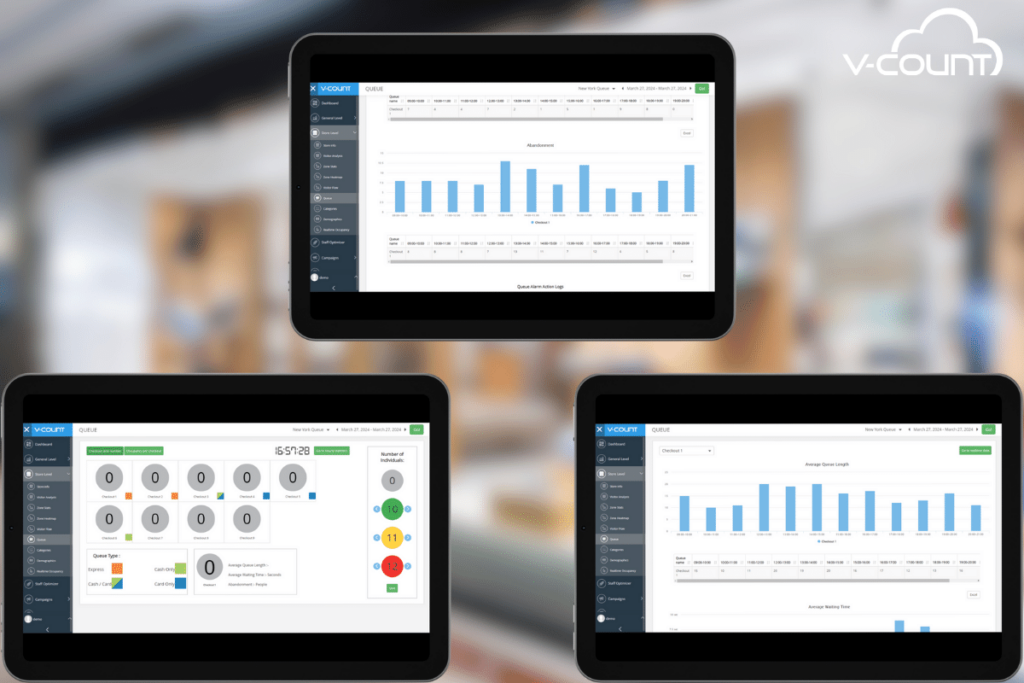In any business, whether it’s selling goods or providing services, maintaining a high level of customer satisfaction should always be a priority. It’s easy for companies that have a heavy focus on sales to neglect the importance of ensuring customer satisfaction. However, what is often overlooked in these instances is the direct correlation between highly satisfied customers and increased business loyalty and repeat purchases. They are more likely to return to your business and also recommend your services to others. Hence, it is essential to ensure your customers remain satisfied both during and after their shopping experience.
The after-sales support service might not always be within your control. There might be times when, despite your best efforts, a disgruntled customer remains unsatisfied. Businesses that have invested in comprehensive staff training are often more equipped to handle such situations and turn these potential disadvantages into advantages.
Customer satisfaction during the sales process, on the other hand, is a facet of your business that you can absolutely control. Providing customers with a smooth, seamless shopping experience when they visit your store will invariably set you apart from your competitors. In order to offer this level of service, there are several fundamental steps that you can take.
One such step, and a crucial one at that, is implementing Queue Management systems. This also happens to be the focal point of our discussion today. Over the course of this content, we will delve into why queue management systems are so important, the benefits they offer, and how you can manage queues effectively with the help of head count sensors. Are you ready? Let’s begin!
Table of Contents
Understanding Queue Management

Before we delve into the importance and significance of queue management in the context of people counting, it’s necessary to first gain a clear understanding of what queue management truly entails. Queue management, in its most basic form, refers to the process of systematically organizing and effectively controlling the movement and flow of individuals in queues or lines. This concept is widely applied, particularly in areas with high foot traffic such as retail stores, service centers, entertainment venues, and other similar environments where crowd control is imperative.
The primary objective of effective queue management is to significantly minimize the duration of wait times and effectively reduce congestion, which are often the primary causes of customer dissatisfaction. By optimizing the utilization of available resources and streamlining the customer journey, businesses can create a more positive and pleasant environment for their customers. This not only enhances the overall customer experience, but also contributes to increased customer loyalty and ultimately, improved business performance. In essence, efficient queue management plays a critical role in the broader context of people counting and crowd management.
The Importance of Queue Management
1. Enhances Customer Satisfaction:
The management of queues is an integral and essential part of any customer-centric business operation, and its efficiency can have a profound impact on the overall satisfaction of customers. When customers are forced to endure long wait times or find themselves in overcrowded queues, it can often result in feelings of frustration and dissatisfaction, which can subsequently erode their loyalty to the brand.
Moreover, these negative experiences can also have a detrimental impact on the business’s revenue, as dissatisfied customers are less likely to make repeat purchases or recommend the brand to others. Therefore, it’s of paramount importance for businesses to take proactive steps in implementing effective and efficient queue management strategies.
By doing so, businesses can significantly reduce the amount of time customers have to wait, thus minimizing the potential for frustration. Additionally, effective queue management can also help to minimize congestion in the business premises, thereby creating a more streamlined and efficient customer journey.
Furthermore, a well-managed queue can create a more pleasant and stress-free experience for customers. This not only improves their immediate perception of the business but can also have a long-term impact on their relationship with the brand. A positive experience can lead to increased customer retention and loyalty, which can ultimately lead to increased revenue for the business.
2. Improves Operational Efficiency:
The management of queues in the context of people counting is an invaluable tool that allows businesses to streamline their operations and significantly improve overall efficiency. By accurately monitoring and assessing the volume of foot traffic and the dynamics of queues, businesses can gain a better understanding of their customer flow and consequently allocate their resources in a more effective and efficient manner.
This kind of detailed and real-time data allows for the optimization of staffing levels by matching the number of employees to the expected influx of customers. Additionally, it enables businesses to anticipate periods of peak demand and prepare accordingly. This might involve adjusting staffing levels, rearranging store layouts, or implementing express service options.
Adopting this proactive, data-driven approach can help minimize bottlenecks and other operational inefficiencies that might otherwise hinder the smooth running of the business. It can enhance workflow efficiency by identifying and resolving issues before they escalate, and it can ensure that customers receive prompt and attentive service.
Ultimately, this level of operational efficiency not only improves the customer experience but also contributes to the overall success and profitability of the business.
3. Maximizes Revenue Potential:
The method of effective queue management can have a substantial impact on a business’s overall profitability and bottom line. By implementing measures that reduce waiting times, a business can significantly enhance the level of customer satisfaction. This, in turn, can lead to an increase in customer retention, as satisfied customers are more likely to return for repeat business. Furthermore, by improving customer satisfaction, businesses can tap into the powerful marketing tool of positive word-of-mouth recommendations, which can attract new customers and thus expand the customer base.
Moreover, by thoroughly optimizing queue management strategies, businesses can take full advantage of opportunities for upselling and cross-selling. Upselling encourages customers to purchase a higher-end product than the one in question, while cross-selling encourages customers to buy related or complementary items. Both of these strategies, when employed effectively, can significantly increase the revenue potential of a business. Hence, a well-structured and efficiently managed queue system not only enhances customer satisfaction but also contributes to the overall growth and profitability of the business.
4. Enables Data-Driven Decision Making:
People counting technology equips businesses with a wealth of invaluable data and deep insights that can be harnessed to make well-informed, strategic decisions. This advanced technology yields detailed information about an array of queue metrics, from wait times and queue lengths to peak traffic periods.
By closely analyzing these critical aspects, businesses are empowered to identify potential areas for improvement, such as underperforming sectors or inefficient practices. Once these areas are identified, they can then proceed to fine-tune their operations, implementing targeted interventions designed to optimize queue management.
These interventions could range from staff reallocation during peak traffic periods to the implementation of digital queuing systems. The aim of these adjustments is to streamline operations, reduce customer waiting times, and ultimately improve the overall customer experience.
The use of data-driven approaches in managing queues ensures that resources are allocated in the most efficient manner possible. This strategic allocation of resources not only minimizes waste but also ensures that customer needs are met promptly and effectively.
In a world where customer satisfaction is paramount to business success, the use of people counting technology and the insights it provides can prove to be a game-changer, driving businesses towards improved efficiency and customer satisfaction.
Implementing Effective Queue Management Strategies
Understanding the critical role that queue management plays in the context of people counting is a crucial first step. It’s the foundation upon which we can start to consider how to improve the efficiency and effectiveness of our processes. With this groundwork laid, we can now delve into an exploration of a variety of effective strategies designed specifically to optimize queue management in various environments. Each of these strategies is meant to enhance the overall customer experience, reduce waiting times, and improve operational efficiency.
1. Real-Time Monitoring:
Implementing people counting technology can be a game-changer to monitor queue dynamics in real-time. By leveraging this sophisticated technology, it is possible to continuously track the foot traffic and the length of queues in a business setting. This continuous monitoring provides valuable insights into customer behaviour and patterns, thereby helping to optimize customer service and manage resources more effectively.
As businesses can identify emerging queues in real-time, it becomes possible to allocate additional resources as and when needed. This proactive approach ensures that the operational flow is maintained and that any potential bottlenecks are addressed promptly.
Additionally, by preventing congestion before it escalates, businesses can significantly enhance the customer experience. After all, long wait times often lead to customer dissatisfaction. Therefore, addressing this issue proactively not only improves the overall customer experience but also leads to increased customer loyalty and, ultimately, higher revenues for the business.
2. Queue Optimization:
Efficient queue management is essential for a smooth customer experience. You should focus on optimizing queue layouts and configurations to minimize wait times and maximize throughput. This is crucial in ensuring customer satisfaction and promoting repeat business. Key factors to consider include the design of the queue, which should be intuitive and easy for customers to navigate. Signage should be clear and informative, guiding customers through the queue and providing them with estimated wait times. Spacing is another critical factor, as overcrowding can cause discomfort for customers and slow down the flow of traffic. By carefully considering each of these elements, you can create a smooth and efficient flow of customers through the queue, improving their overall experience and boosting your business.

3. Staff Training:
It’s crucial to provide a comprehensive training program to staff members on effective queue management techniques. This should not only be a one-time event, but an ongoing educational process that keeps staff up-to-date with the latest strategies and best practices in queue management. The goal of this training is to equip team members with the skills they need to monitor and control queues effectively.
This includes understanding how to predict and manage queue lengths and waiting times, as well as how to respond to situations where the queue becomes unmanageable. It’s also important that staff have the tools and resources they need to implement these techniques effectively, including any necessary technology or equipment.
In addition to the technical aspects of queue management, staff should also be trained in managing customer expectations. This involves understanding how to communicate with customers about wait times, and how to manage their expectations in a way that minimizes frustration and maximizes satisfaction. It also includes strategies for dealing with difficult or dissatisfied customers in a professional manner.
Finally, the training should also cover how to resolve issues promptly and professionally. This includes troubleshooting problems with queue management systems, responding to customer complaints, and taking action to resolve problems as quickly as possible. By ensuring that staff are well-trained in these areas, we can provide a more efficient, effective and customer-friendly service.
4. Feedback and Continuous Improvement:
One of the key aspects of our service is to collect and analyze feedback from our valued customers regarding their experiences in the queue. Their insights serve as a critical resource in identifying areas where we can improve and elevate the customer experience. To ensure that we are always delivering the highest quality service, we need to continuously evaluate our queue management strategies.
This involves digging deep into the data, identifying patterns, and understanding the dynamics of our queues. Based on this understanding, we can then make any necessary adjustments to our strategies. It’s important to remember that this is not a one-time process but rather an ongoing one, requiring us to constantly strive for optimization and enhancement. We are committed to making every customer’s queueing experience as pleasant and efficient as possible and believe that by faithfully adhering to this approach, we can achieve this goal.
How Can I Access the Queue Management Solution?
If you’re struggling with an issue of queues at your physical location, an efficient solution is available from V-Count’s latest and robust product offering, Nano. Nano is not just an ordinary device; it’s a WiFi-enabled marvel with an astounding accuracy rate of 99%, which classifies it as an authentic plug-and-play product.
One of the remarkable features of Nano is its hassle-free installation process. It’s as simple as unboxing the device and connecting it to both WiFi and power. There’s no need for specialized skills or professional assistance. You can do it all by yourself! This not only makes the process straightforward but also allows you to cut down on installation costs by a significant 60%.
With Nano at your disposal, you are equipped with a powerful Queue Management solution. This advanced tool not only identifies the queue-related issues you’re facing but also provides effective remedies. However, Nano doesn’t work alone in this quest to streamline your operations.

Accompanying Nano is BoostBI, our state-of-the-art visitor analytic tool. This bundled add-on enables you to view your data through a range of customizable dashboards, available in 19 different languages. Moreover, BoostBI is designed to be seamlessly integrated into your existing systems like POS, using an API.
What sets BoostBI apart from its competitors is its exclusive mobile app. With this app, you have access to your data at your fingertips, irrespective of your location. Whether you’re on the road or relaxing at home, you can view your data with a single tap on your phone or tablet through the BoostBI mobile app. The app empowers you to start enhancing your business operations and reducing Queue queues. The result? A potential reduction in queue lengths by as much as 38%.

Conclusion
In conclusion, queue management is a critical component of people counting that can significantly impact customer satisfaction, operational efficiency, and revenue generation. By leveraging people counting technology and implementing effective queue management strategies, businesses can minimize wait times, reduce congestion, and create a seamless and enjoyable experience for customers. As the demand for efficient queue management continues to grow, businesses must prioritize this aspect of their operations to stay competitive in today’s dynamic marketplace.
Get more detailed information about Queue Management and Nano right away, book a free demo now!







